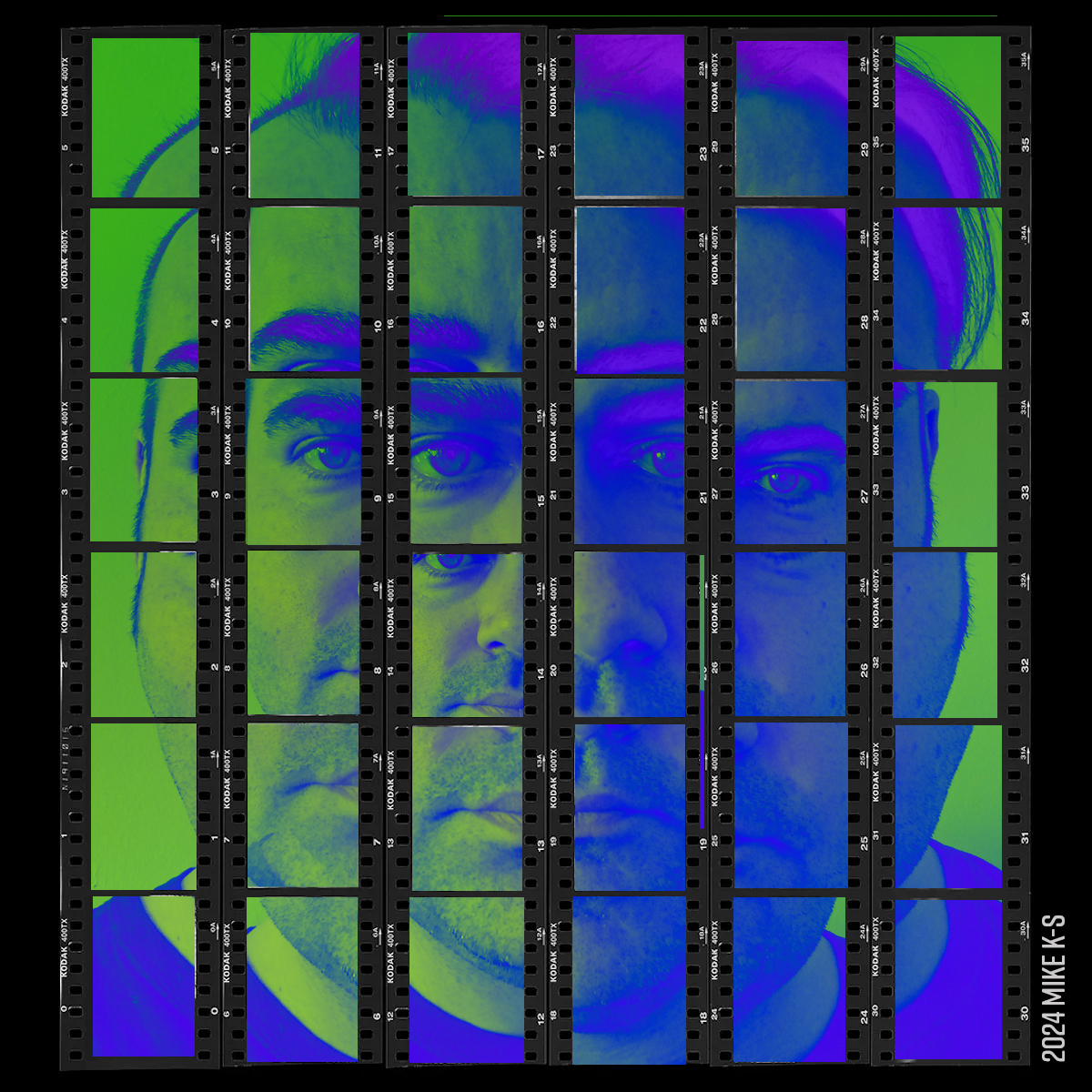
Untangling: Transforming What’s Impossibly Stuck
© 2024 Barbara McGavin & Ann Weiser Cornell
Our careers, our relationships, and our happiness were on the line. Even though we were experienced workshop leaders – even though other people looked to us for help—we were each secretly facing some of the biggest, toughest, most problematic issues of our lives.
Ann was drinking too much – more and more often. Barbara sometimes felt so inadequate and worthless that she thought she’d be better off disappearing—permanently. We both felt deeply ashamed about having these problems, and we were doing our utmost to pretend they didn’t exist.
The first inkling of a breakthrough came when we confessed to each other what we were struggling with. The method we had been teaching (Focusing) had helped us in many ways, but these entrenched problems had remained untouched. We realized there and then that we needed to find a way to bring real change.
Pooling our resources, and building on what we’d each already been developing, we found ourselves creating entirely new processes. And, of course, we were trying them out first for ourselves.
They worked. Ann stopped drinking, and Barbara stopped wanting to disappear. What a relief!
These were huge changes. But something else happened that turned out to be even more important.
It turned out that we didn’t have to “fix” ourselves or “solve” our problems. When we saw our problematic issues as defects or failures, we were stuck with them. When we treated ourselves with radical empathy and self-acceptance, the problems quite literally solved themselves.
You know those problems in your life that you think are the worst, the most despicable, the biggest, most utterly insoluble? Those are the places where your greatest growth and transformation are waiting to happen.
Yes, the very place that seems to be such an intractable problem holds within itself everything needed for it to resolve. It does need you to bring a certain kind of awareness to it, but it absolutely doesn’t require you to fix or figure out or force anything to change. As a matter of fact, trying to fix or force or figure it out will only keep things stuck.
Wherever there is something that is impossible to think or feel or do in your life, you are finding the exact spot where the next step in your life is still ready, waiting to happen. It doesn’t matter how long ago it got all jammed up. The right next step of your life can still happen.

It was a Tangle
Ann struggled with alcohol, and Barbara struggled with food. Ann had writer’s block, and Barbara had suicidal depression. (And we had other issues as well.) You can find many books on depression, or on addiction to alcohol or on eating issues, or on procrastination and writer’s block, as if all of them are separate kinds of problems. But here is the insight that shifted everything for us: These are all the same kind of problem.
We call it a Tangle.
If you want to do something that you should be able to do, but it feels impossible—like Ann wanting to write—you are caught in a Tangle. Maybe you find it impossible to stop doing something—like Barbara and her struggles with food—that’s also a Tangle. Or it might be impossible to believe you have what it takes to accomplish something. Or it might seem impossible to feel safe even when there is nothing apparently threatening you.
So what is a Tangle?
A Tangle is a kind of problem that is complex in a fiendish kind of way. It is, in some fundamental way, impossible to solve. Whoa! What did we just say? That’s right. If you try to solve the Tangle from inside itself, it is impossible to solve.
Before you stop reading in disgust, we want to reassure you that Tangles can and do untangle. It might be relieving to know the reason you’re feeling stuck, the reason your problem has been so intractable, is not that you are stupid or lazy or crazy. The problem lies within the structure of the Tangle itself.
A Tangle is a type of problem that cannot be solved at the level of what it seems to be about. For example, you’d think that if the problem is about exercising, all you’d need to do is figure out a way to get yourself to the gym or out the door for a bike ride or a walk. If this is a Tangle, even if you do get to the gym every single day, it won’t solve your Tangle. (It would be nice if it would, but it won’t.)
No matter how smart or determined or disciplined you are, when you are caught up in a Tangle you are living inside an emotional and cognitive boundary that limits even what you are able to perceive. It’s like growing up on an island in the middle of an ocean with no way to get off.
Everything you think or feel or do about this Tangle is generated from within its borders. That in turn keeps you inside those borders.
When we are stuck in a Tangle, the way we define or describe the problem is actually part of the problem: We might say, “My clutter rules my life,” or “I have writer’s block.” We might say about a person, “He betrayed me.” We might say about ourselves, “If I were thinner, people would love me.” We might decide the solution is “I just have to try harder.” But in every case, those formulations don’t help one little bit. They are all generated from inside the Tangle and they actually keep us stuck.
We can’t think our way out of a Tangle. We are inside the cage of the problem because our thinking itself is part of the cage.
Let’s just say that again. We can’t conceptualize, or analyze, or problem-solve our way out—not if the problem is a Tangle. The very things that would work to solve even a complex problem—hard work, persistence, coming up with alternative solutions and trying them out—don’t work with a Tangle. Inside a Tangle, the best that all those efforts can accomplish is to keep things the same. Often they make things worse.
How we think about a Tangle, and what we think is causing it, is either not true or it is only a small, superficial part of what is really going on.
Why talk about Parts?
When we started relating to aspects of our experience as Parts, the Tangles we faced became much easier to explore. If it was a Part of Ann that wanted to drink, then Ann could relate to that part of her with compassion, be curious about it, and get to know it better. If it was a Part of Barbara that wanted to die, then she could treat that Part of her with acceptance and love, knowing she was more than that Part. Moving into relationship with Parts of ourselves was what made it possible for our Tangles to shift, release, and transform.

Some people are bothered by this talk about Parts. They say, “I want to be more whole, not more in bits.” But truthfully, being “in bits” is a common experience. You know how sometimes you are of two minds about something, how sometimes you have more than one feeling, or sometimes you do something you wish you didn’t and then tell yourself off for having done it?
The truth about you is that you are a whole person even when it feels like you are in pieces. Then why talk about Parts? Quite simply, we do it because it helps. Using Parts language and Parts concepts enables us to form relationships with troubling or puzzling aspects of our reactions, our behavior, and our feelings. And it is in having empathic relationships with these aspects of our lives that Untangling can take place.
Tangled up in Parts
In Tangles, Parts can seem like different people inside of you. They have different points of view, often seeing the world in radically different ways. They hold different beliefs about what is right or good or healthy or how you should live. They have different desires, different fears, different dreams for you. Some of them tell you what they think of you or what they think you should be doing. Some of them don’t talk much, they just do things or refuse to do things.
All of these Parts have different concerns. They are afraid of different things. They develop different strategies to deal with the situations you are in. Maybe Part of you shies away from going further with something you want to do while another Part of you is berating you for being a wimp. Perhaps you want to reveal what is deep in your heart, but Part of you draws back and in, making you smaller, more defended, less alive.

And Parts don’t just have different points of view. All of them have limited points of view. None of them can see the full picture. They cannot have a sense of the whole Tangle, let alone a sense of something bigger than the Tangle. Because Parts only have limited points of view, they can only deal with the little bit of the Tangle they are aware of. Any solutions they utilize are incomplete and inadequate.
Parts often pull you in different directions, either by openly battling or quietly undermining each other. One side may have a loud voice, and the other is silent yet has a powerful impact on your life. One Part in your Tangle may be on top for a while, and then it flips and the other one gets the upper hand. They push and pull, back and forth, round and round in their anxiety, fear, and desire… and with each fraught transfer of power, you probably feel increasingly frustrated, helpless, mired, disgusted with yourself. You may wind up feeling like a failure because no matter what you do, you can’t resolve the struggle. Being caught in a tussle between Parts in a Tangle is no fun.
Where do Parts come from?
When something difficult happens, your body has a feeling of the forward momentum of life being stopped. That, in itself, is at least uncomfortable. You also have an emotional reaction to being prevented from going forward. You might feel frustrated or bewildered or upset or sad or angry or scared about it. These emotional reactions are a natural part of your body’s response to not being able to get your life moving again in the way that would be right for you.
Your Tangle originally formed because you experienced something painfully difficult that proved impossible for you to work through. In trying to deal with it, you were confronted with a “damned if I do, damned if I don’t” dilemma. Dealing with it would have meant having to put yourself in a situation that felt life-threatening.
There are many kinds of danger you might have faced, but the danger that creates Tangles threatens your connections with the people who are essential in your life. In a Tangle those important people around you, instead of helping, were actually part of what made the situation impossible to resolve.
Ann’s father was emotionally distant and sometimes sarcastic. Compared to what many other kids suffer, that might not seem so bad. Yet Ann’s most tangled Tangles led back to all the times she reached to her father for love and approval, and over and over he turned away. It became impossible for Ann to directly seek love and approval from her father. Later in her life this affected all her close relationships with men.
In Barbara’s family expressing any kind of “negative” emotion was quickly squelched. She vividly remembers her father saying, “The McGavins don’t feel nervous.” She came to feel the only safe thing to do with all her emotions was to hide them.
Most of the people who have done Untangling with us have had painful experiences with their parents or siblings, teachers, schoolmates, people in some kind of position of power over them. When they were exuberant, they were mocked. When they shared something they had made, they were ignored. When their boundaries were disrespected, it wasn’t safe to speak up. They have been criticized, belittled, controlled, dismissed, betrayed. Some have been physically attacked. They were not safe to be themselves, freely and openly. They were not safe to express their needs for support, understanding, help or love.
When you can’t resolve the tough, confusing situation you’re facing, and the feelings about your life being blocked cannot be felt, those feelings become frozen. When feelings are frozen, they cannot shift and evolve. In that impossible situation, you could not live freely in any of the ways that would have been right for you. What should have been a straightforward, if painful, experience has now become stuck—stopped. We call this a Stoppage—and from a Stoppage, Parts develop.
So what are Parts trying to do?
Parts develop around a Stoppage to try to protect you from experiencing the unbearableness of it even as they are also trying to go beyond it. Parts are attempts to solve the problem of the Stoppage, but, as we have already said, Parts are limited, so their solutions are limited too.
When we can’t get everything we need, Parts try to get us some of what we need. When the feelings that get stirred up are too much to experience, Parts try to keep us shut down or distracted or feeling something else instead. When we can’t go forward as all of who we are, Parts are an attempt to go forward with part of who we are.

Parts come into being for three fundamental reasons: so you can get at least some of what you needed; so you don’t have to feel the full pain of what happened; and so the incomplete and not entirely adequate solutions and strategies of other Parts will not make things even worse for you.
Every time Barbara expressed how she was feeling, her father would let her know that kind of behavior was simply not acceptable. Over time, a Part of her came to believe that showing her feelings meant she was f lawed and inherently unloveable. In order to protect herself, she learned to hide her feelings by any means possible. She developed a Part that worked endlessly to present a stoical, ultra-private facade, no matter what she actually felt, to manage her feelings of being fundamentally worthless. She became so practiced at donning her mask of invisibility that when other people would look at her, it was as if Barbara had vanished.
There was another side to this as well. As Barbara grew older and moved out into the world, she started to feel the limitations of hiding who she was all the time. She wanted to be more free, more authentic and genuine, but she didn’t know how, so she would blurt out intimate details about her life to people she barely knew and then feel devastated and disgusted with herself when they recoiled from her.

This is an example of how Parts take on tough jobs, help us survive, help us to stay safe. But because they are “partial,” they don’t have the resources of our full selves, and the solutions they come up with will always be incomplete. When those attempts fail to solve the problem, other Parts with different strategies try to fix the holes and gaps that have been created. But, of course, these further attempts to fix things are also incomplete, and the result is a tangled mess of different strategies, competing and arguing with each other.
And this is why, when we talk about Tangles, we need to talk about Parts.

How your Parts need you to be with them
When you recognize you have been identified with a Part, that gives you the opportunity to disidentify (unmerge) from it. As you disidentify from it, you can feel you are more than just that one Part of you.
When you become grounded in that larger sense of yourself, you have more options and more freedom than a Part does. You can see a wider perspective that is not limited by a Part’s point of view.
That’s what happened when Ann recognized it was a Part of her, not all of her, that wanted to drink. It’s what happened when Barbara recognized it was a Part of her, not all of her, that wanted to die.
Recognizing something in you is a Part raises the question of how you treat your Parts. There may be an intense temptation to squash troublesome Parts, cut them out, get rid of them. “If that’s what’s been causing the problem, I’ll just eliminate it and we’ll be fine.”
There are actually two huge problems with that approach. One, you are becoming identified with another Part that has an opinion about something in you and that simply doesn’t work. Two—and this is even more important than problem number one—if you managed to get rid of a Part of you, you’d be eliminating something valuable and precious from who you are.
Every one of your Parts is a custodian of essential aspects of who you are, aspects you haven’t been able to live openly and freely. To be able to live fully, you’ll need those attributes, qualities, and energy. When you are able to be with your Parts in the ways they need from you, those abilities become freely available in all areas of your life in ways that fit with your life as it now is.
Parts need now what was missing when your Tangle first formed: understanding, compassion, and empathy. In other words, they need your love.
Self-in-Presence
Early in our work we began to notice something interesting: We needed to pay attention to how we were paying attention. The quality of our attention affected whether something stuck was able to shift—or not.
Tangles are full of Parts. In order to help them shift and untangle, we needed to cultivate a way of being that wasn’t “partial.” Rather than taking sides or having an agenda, we needed to be interested and curious toward every Part. We call this way of being Self-in-Presence.
Self-in-Presence is you when you are not merged with any Part. As Self-in-Presence you turn toward and stay with what you are feeling—or, as we say, what Part of you is feeling. You recognize the Part and acknowledge it, creating a space in your inner world where it can be just the way it is. You develop a relationship with it, and you do this with each Part of you that needs your company.

Sometimes it can be challenging to turn toward a Part, such as one that is in a great deal of pain or one that is behaving in a self-destructively out-of-control way. If so, you become aware that something in you is finding it challenging, and acknowledge that Part of you as well.
As Self-in-Presence, you are the environment where every Part of you can be welcomed and related to just as it is. As Self-in-Presence, you give your Parts what they have been missing. You become the environment in which your Tangle untangles.
The Power of Cultivating Self-in-Presence
Cultivating Self-in-Presence is the most important thing you can do as you explore your Tangles. Being Self-in-Presence will protect you from being overwhelmed, it will give you clarity, and it will keep you on track. Being Self-in-Presence will make it possible for you to give your Parts the compassion, tenderness and understanding they need. It is the environment in which your Tangles can transform.

As you feel yourself being embodied, calm, curious and courageous, you are living, breathing Self-in Presence. As you create a safe environment for whatever needs your attention, you are creating a world of Self-in-Presence.
Does all that seem like a tall order? Sure, being Self-in-Presence isn’t always easy. That’s why we talk about cultivating Self-in-Presence. Being Self in-Presence at any given time is always a work in progress.
Self-in-Presence itself is not a feeling, it is a way of being present for your feelings. And your Self-in Presence isn’t something separate from and bigger than you, like God or Divine Spirit or Universal Good. Self-in-Presence is you. When you are Self in-Presence, nothing in you is bigger then you are. You are the space in which everything in you can be the way it is.
Language that supports Self-in-Presence
Language can be amazingly powerful. Language can hurt, undermine, diminish, block. Language can also heal, liberate, uplift, and support. We have crafted language that can help you shift from being merged with a Part into being Self-in-Presence and being with a Part. In Inner Relationship Focusing, we call it Presence Language .
You might have the idea that you have to feel compassionate first in order to relate as Self-in-Presence to your Parts. Actually, just using the language of Presence, whether you feel compassionate yet or not, helps you to cultivate Self-in-Presence.
Something in me…
The first important phrase of Presence Language is “something in me.” This phrase helps you to unmerge from a Part.
When you say “I am angry!” you are merged with a Part of you that is feeling angry, with all the emotions, thoughts and world view of that Part.
When you say, “Something in me is feeling angry,” you are already more than just the Part that is angry. Now you are not angry; a Part of you is. You can feel you are more than that angry Part, and, because of that, you can be present to that Part, listen to it, be empathic, and keep it company. It was not possible for you to be present for the angry Part when, for all practical purposes, you were the angry Part.
When you unmerge from a Part, you still feel that Part’s feelings. They are still there—in fact, maybe you feel them even more fully than before. You haven’t pushed them away, denied them, gotten rid of them, or repressed them. But you can also feel that you are more than any of those feelings.
By shifting your language, adding just three words, “something in me,” you can shift to being Self in-Presence in relation to Parts in your Tangle.
Try this:
Pick an emotion you are aware of in your Tangle.
Make a short sentence that includes that emotion. You don’t have to get into the reasons or the causes. Three words are enough. For example, “I feel angry” or “I am worried.”
Now, take your sentence, for example, “I feel sad,” and change the word “I” to “something in me.” Like this: “I feel sad” becomes “Something in me is feeling sad.”
Notice what happens. Sense what that feels like in your body now.
When people use this language, they often report a greater lightness, space, and curiosity. They f ind themselves being compassionate and warm toward something they previously didn’t want to feel.
“I am sensing…” is the second powerful phrase that helps you to unmerge from your Parts and move toward identifying with Self-in-Presence. When you say “I am sensing,” you are identifying with the larger “I.” You are the “I” that is sensing. You are the “I” that can notice a Part and listen to it. You can be a steady and compassionate presence for all your Parts.
Laurence, a student of ours, attended a community meeting, and someone unexpectedly called on him to give an opinion. He froze in terror. He felt sick and wanted to run from the room. He managed to mumble something he thought sounded totally inadequate. Later he felt ashamed and disgusted with himself and viciously criticized himself for being so “pathetic.”

Then he remembered what he had learned about Self-in-Presence. He realized that the surprise of being called on to speak in public had thrown him into the middle of his Tangle. Just recognizing this brought a bit of relief. He paused, and then became aware of a Part of him that was worried that when he had to say something in public, he would open his mouth, and nothing but gibberish would come out.
He said to himself, “I am sensing something in me that is worried that anything I say will be gibberish.” Just saying those words brought Laurence a deeper breath.
Then he became aware of a sad, heavy feeling in his heart. “I am sensing something in me is feeling sad…” It took a few minutes of sensing what was there for more words to come. “Oh… it’s sad because I am a person who loves language, and at times like that words fail me.” His eyes felt moist, and he gently put his hand on his chest.
Presence Language helped Laurence to un-merge from his Parts and to begin to relate to them. He felt more relaxed and more connected with himself. His mood shifted. Of course, his Tangle had a lot more Untangling to do, but this much already made an important difference.
- Take the sentence you got before: for example, “Something in me is feeling sad.”
- Now add the words “I am sensing” to the beginning of your sentence.
- “I am sensing something in me is feeling sad.”
- Notice what happens. Sense what that feels like in your body now.
Self-in-Presence is cultivated
Self-in-Presence is a way of being that you can practice and cultivate. It isn’t something you have to go looking for somewhere else, or someone else you need to turn yourself into. Self-in-Presence is not an object inside yourself that you have to search for, find, and hang on to. Self-in-Presence is you.
When your Parts become you
As your Tangle begins to untangle, the abilities, strengths, skills and competencies that your Parts have developed over the years to cope with your Tangle are free to be used in creative and life enhancing ways throughout all areas of your life.
When a Tangle untangles, your Parts’ strategies become unhooked from it. They become freed from the repertoire of a Part and simply become another possible way for you to do something. You go for a walk because you choose to, not because it is something you should do. You take in feedback because you want to learn, not because there’s something fundamentally wrong with you and you need to shape up. You do things for others because you care about them, not because you have to do it to be a “good person.”
Untangled, you make choices from a different place. You make choices from you as a whole. And this needn’t be a conscious, “I am choosing” kind of place. You might simply find yourself making a difficult phone call or tracking your food or getting out the door for a walk or writing a book or reaching out to help a friend. No struggle. No shame. No “should.” Just doing it.
A lifelong way of being
Because life is a process, there is always something next. As you live beyond Tangles you naturally live more and more freely and easily. This includes simply getting on with the day-to-day tasks of life. You are more able to meet the inevitable challenges life throws at you, with curiosity and patience and courage.

If you stop to notice, you will probably recognize how certain experiences that may have once been all too common have now melted away: anxiously avoiding situations, being tense and driven to accomplish, feeling despairing, frustrated, and discouraged about ever reaching your goals. Those feelings may have colored your daily life, from brushing your teeth to going after your biggest dreams. Tangles affect our whole lives.
As your Tangles resolve, they will take up less and less space in your life. The leftover bits of them will be more and more like little knots you encounter in the smooth skein of living. Living from Self-in Presence more and more enables you to turn toward what needs your attention, even when it is painful or difficult.
What is a lifelong way of being Untangled? It comes down to this: Living from Self-in-Presence is both something you intentionally practice and cultivate, and an effortless way of living.
ABOUT THE AUTHOR
 Barbara McGavin and Ann Weiser Cornell have been friends since 1983. In 1994 their teaching partnership took a big leap when together they began discovering the processes of change that became Untangling®. Since then they’ve had the pleasure of offering Untangling® retreats and online classes for people seeking transformation all over the world. They are also the co-developers of Inner Relationship Focusing. This article is excerpted from their new book Untangling: How You Can Transform What’s Impossibly Stuck.
Barbara McGavin and Ann Weiser Cornell have been friends since 1983. In 1994 their teaching partnership took a big leap when together they began discovering the processes of change that became Untangling®. Since then they’ve had the pleasure of offering Untangling® retreats and online classes for people seeking transformation all over the world. They are also the co-developers of Inner Relationship Focusing. This article is excerpted from their new book Untangling: How You Can Transform What’s Impossibly Stuck.
Posted by mkeane on Tuesday, July 30th, 2024 @ 2:25AM
Categories:
